Strong and shallow M7.0 earthquake hits Anchorage, Alaska
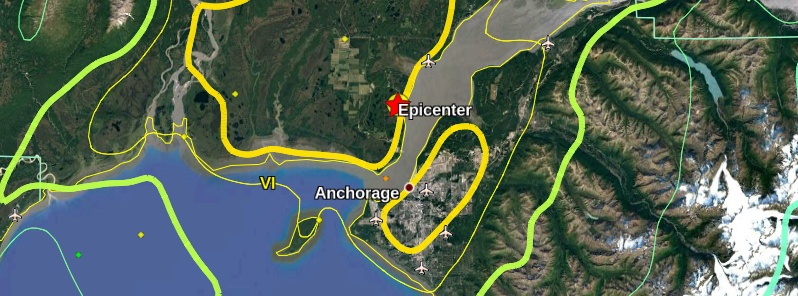
A strong and shallow earthquake registered by the USGS as M7.0 hit Anchorage, Alaska at 17:29 UTC (08:29 AKST) on November 30, 2018. The agency is reporting a depth of 40.9 km (25.4 miles). EMSC is reporting M7.0 at a depth of 31 km (19.2 miles). The quake was followed by 201 aftershocks by 13:19 UTC, December 1.
According to the USGS, the epicenter was located 3.1 km (1.9 miles) SE of Point MacKenzie (population 529), 13.7 km (8.5 miles) N of Anchorage (population 298 695) and 19.4 km (12.1 miles) W of Eagle River (population 24 793), Alaska.
There are about 390 000 people living within 100 km (62 miles).
Some 52 000 people are estimated to have felt very strong shaking, 277 000 strong, 48 000 moderate, 70 000 light and 1 000 weak.
The quake caused widespread power outages and damage, but there are no reports of deaths or injuries.
A tsunami warning was in effect for coastal areas of Cook Inlet and Southern Kenai Peninsula, Alaska. Tsunami waves have not been observed and the warning was canceled some 90 minutes after the quake.
The USGS issued a green alert for shaking-related fatalities. There is a low likelihood of casualties.
A yellow alert was issued for economic losses. Some damage is possible and the impact should be relatively localized. Estimated economic losses are less than 1% of GDP of the United States. Past events with this alert level have required a local or regional level response.
Overall, the population in this region resides in structures that are resistant to earthquake shaking, though vulnerable structures exist. The predominant vulnerable building types are unreinforced brick masonry and reinforced masonry construction.
Recent earthquakes in this area have caused secondary hazards such as landslides and liquefaction that might have contributed to losses.

Estimated population exposure to earthquake shaking
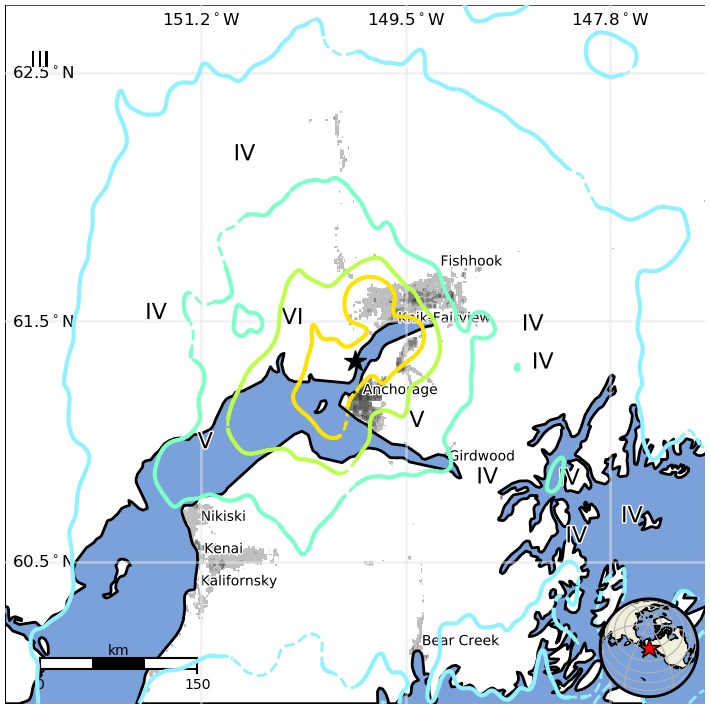

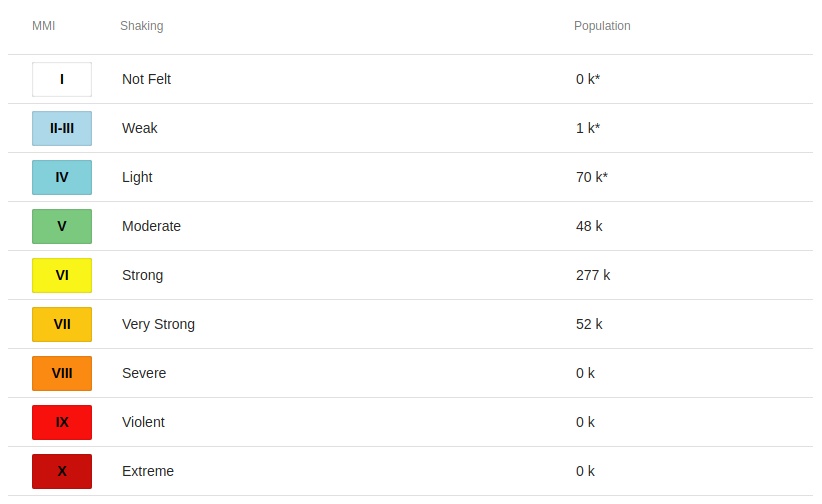

Selected cities exposed
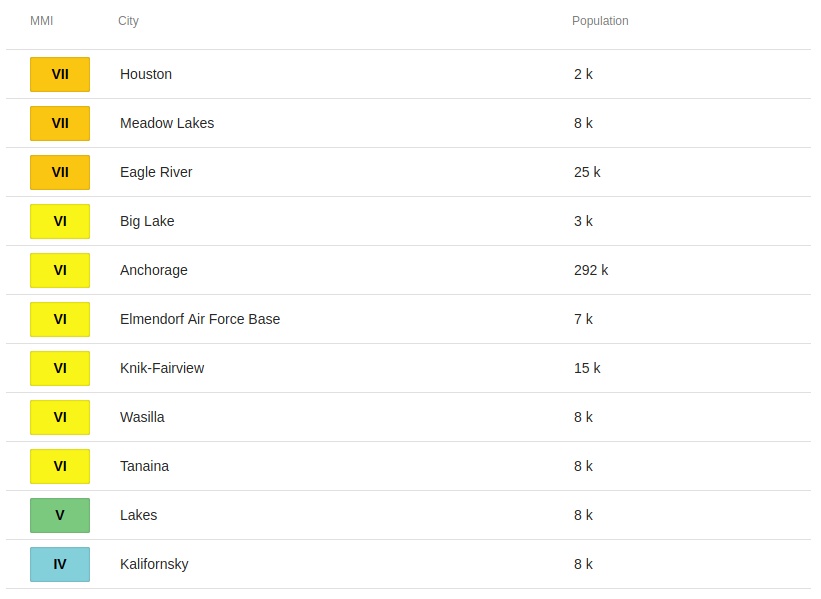

Regional seismicity
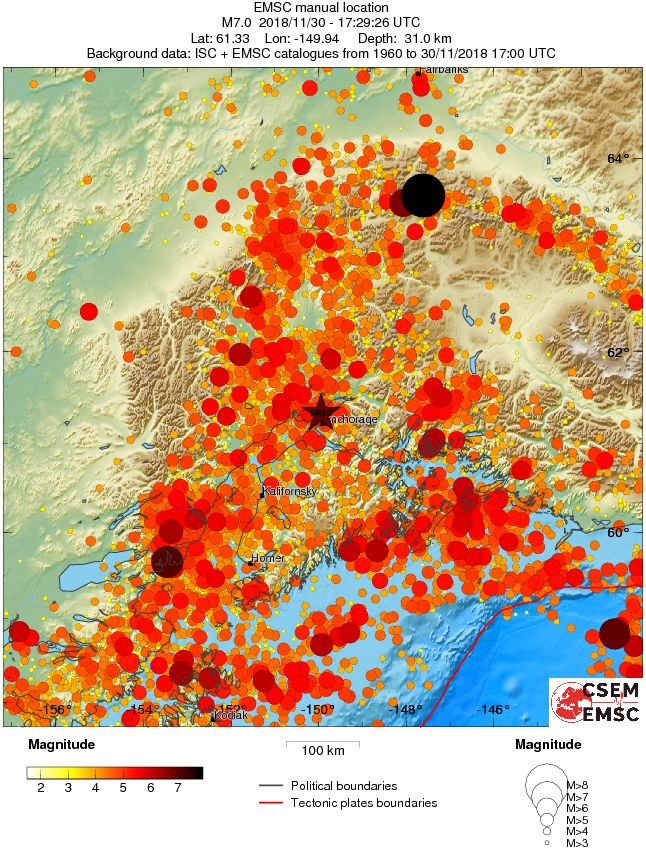

Aftershocks
Be ready for more earthquakes!
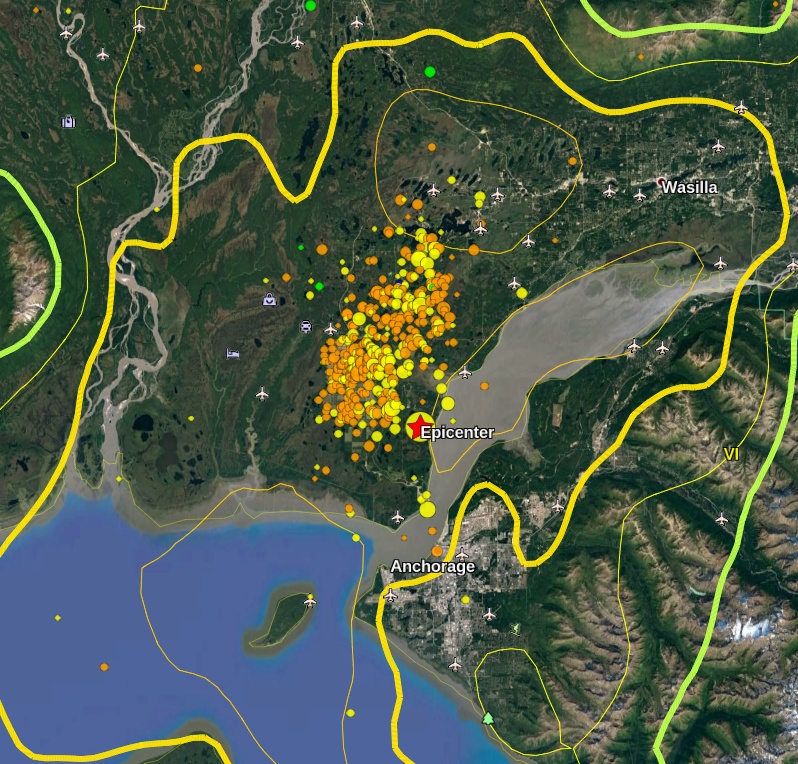

Image credit: USGS, Google, TW
- More earthquakes than usual (called aftershocks) will continue to occur near the mainshock.
- When there are more earthquakes, the chance of a large earthquake is greater which means that the chance of damage is greater.
- The USGS advises everyone to be aware of the possibility of aftershocks, especially when in or around vulnerable structures such as unreinforced masonry buildings.
- This earthquake could be part of a sequence. An earthquake sequence may have larger and potentially damaging earthquakes in the future, so remember to: Drop, Cover, and Hold on.
The USGS said there is a 4% chance of one or more aftershocks that are larger than magnitude 7.0 in the next 7 days.
It is likely that there will be smaller earthquakes over the next 1 week, with 20 to 2 200 magnitude 3 or higher aftershocks. Magnitude 3 and above are large enough to be felt near the epicenter. The number of aftershocks will drop off over time, but a large aftershock can increase the numbers again, temporarily.
The USGS estimates the chance of more aftershocks as follows: Within the next 1 Week until December 7, 2018 at 18:20:26 UTC:
The chance of an earthquake of magnitude 3 or higher is > 99 %, and it is most likely that as few as 20 or as many as 2 200 such earthquakes may occur in the case that the sequence is re-invigorated by a larger aftershock. The chance of an earthquake of magnitude 5 or higher is 78 %, and it is most likely that as few as 0 or as many as 23 such earthquakes may occur. The chance of an earthquake of magnitude 6 or higher is 27 %, and it is most likely that as few as 0 or as many as 3 such earthquakes may occur. The chance of an earthquake of magnitude 7 or higher is 4 %, such an earthquake is possible but with a low probability.
Featured image credit: Google, USGS, TW

The epicenter was 2.6 miles NE of Point MacKenzie , not SE.
No deaths, no injuries and no looting.
Thanks, but we’ll stick to official data.